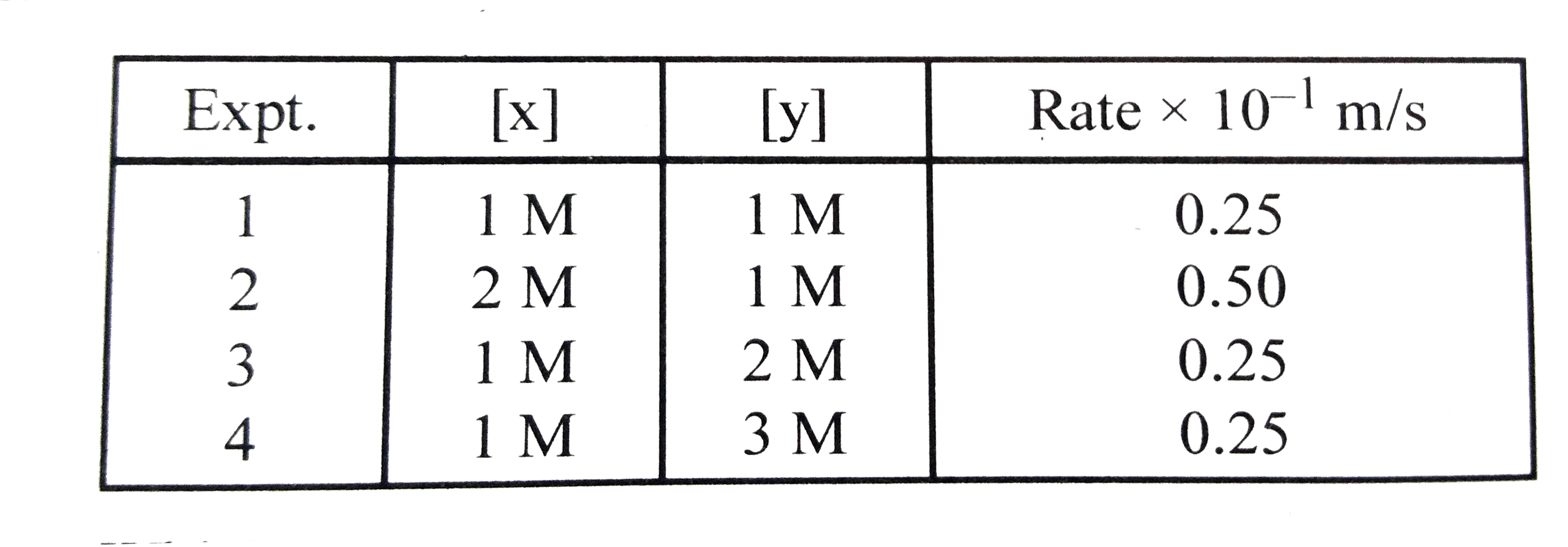For a reaction ,A+B→C data is as follows :

the rate law for the reaction is
Rate =K[B]3
Rate =[A]2[B]
Rate =k[A]3
Rate =[A][B]2
The correct Answer is:C
Compare experiment no 1 and 4.
[B] is constant and [A] is doubled , the rate becomes 8 times i.e., 23
∴ for A , n=3
Compare experiment no 1 and 3.
[A] is constant and [B] is dould , the rate is same hence the rate is independent of [B] .
∴ Rate law is Rate =k[A]3.
Topper's Solved these Questions
- CHEMICAL KINETICSBOOK - MARVEL PUBLICATIONCHAPTER - CHEMICAL KINETICSEXERCISE - TEST YOUR GRASP
50 Videos
- BIOMOLECULESBOOK - MARVEL PUBLICATIONCHAPTER - BIOMOLECULESEXERCISE - TEST YOUR GRASP
40 Videos
- CHEMICAL THERMODYNAMICS AND ENERGETICSBOOK - MARVEL PUBLICATIONCHAPTER - CHEMICAL THERMODYNAMICS AND ENERGETICSEXERCISE - MULTIPLE CHOICE QUESTIONS (TEST YOUR GRASP)
50 Videos
Similar Questions
Knowledge Check
The differential rate law for the reaction
A−d[H2]dt=−d[I2]dt=−d[HI]dtBd[H2]dt=d[I2]dt=d[HI]dtC12d[H2]dt=d[I2]dt=−d[HI]dtD−2d[H2]dt=−2d[I2]dt=d[HI]dt2A+B→D+E, for the reaction proposed mechanism A+B→C+D (slow), A+C→E (fast). The rate law expression for the reaction is
Ar=K[A]2[B]Br=K[A][B]Cr=K[A]2Dr=K[A][C]For the reaction, A+2B→C, the differential from of the rate law is:
A(a) d[C]dt=−d[A]dtB(b) 3d[C]dt=−d[B]dtC(c ) −3d[B]dt=−d[C]dtD(d) d[A]dt=d[C]dt
The rate of a reaction A + B → products is studied to give following data.

What is the rate law ? What is the half-life of A in the reaction
View SolutionThe following results have been obtained during the kinetic studies of the reaction:
2A+B→C+D

Determine the rate law and the rate constant for the reaction.
View SolutionFor the reaction
2NO→2NOCl
at 300 K, following data are obtained:

Write rat law for the reaction. What is the order of the reaction? Also calculate the specific rate constant.
View SolutionRate law for the reaction, A+2B→C is found to be
Rate =k[A][B]
Concentration of reactant 'B' is doubled keeping the concentration of 'A' constant, the value of rate constant will be _______
View SolutionThe rate law for a reaction A+B→C+D is given by the expression k[A]. The rate of reaction will be
View Solution


